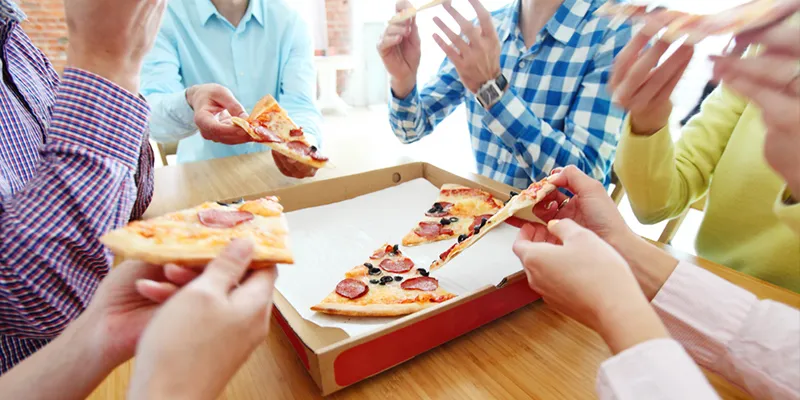Why having a 'two-pizza team' helps
Taking a leaf, or a slice, from Jeff Bezos' formula to keep things fresh and innovative at Amazon, companies would do well to form smaller, more nimble teams that can implement things faster and are not bogged down by bureaucracy.

Work is increasingly becoming complex. The days of the lone genius are over. While Tim Berners Lee is given credit for inventing the World Wide Web, we often forget the contributions of Robert Callieau and the several thousands of people who have continuously worked to shape the web to its present reality.
Scientific progress is usually collaborative by its very nature. While Steve Jobs gets the limelight as the one person who gave us the iPhone a decade ago, it was the collective work of several people who had to work together to make it happen. The designers of the hardware worked with the supply chain people to procure the various components. The marketing team had to create the ads that made us sit up and take notice. The human resources teams deserve credit for putting together the right team.
Two-pizza teams
Jeff Bezos made history this week when he surged past Bill Gates as the richest man on earth for a short while. Bezos had a net worth of over $89 billion when markets closed, while Gates was ahead by a billion dollars. I have no doubt that Bezos will go past Gates (for one, Gates is giving away his wealth) very soon.
Amazon has grown from being an online bookseller, which is where it all began 22 years back, to a pot-pourri of businesses. From cloud computing, movies, music, food, artificial intelligence and space shuttles, Bezos is doing it all. Apple may have been the past, but Amazon is definitely the future. How does Bezos do this? While most businesses become bureaucratic and sloppy as they grow in size, Bezos has kept the 'two pizza rule' to keep the behemoth nimble. He keeps the team size to no more than six-seven people.

Amazon’s rise has led to the creation of Death by Amazon Index, which tracks the performance of the companies affected by the rise of Amazon. Those 54 companies include Barnes & Noble, Costco, Best Buy, GameStop, Macy’s, Nordstrom, Sears, Target, CVS Caremark and Rite Aid and Walmart. As organisations grow, the rumor mills become far more reliable sources of information than the formal communication. The employees get far more reliable updates from the business press than their own managers. It slows down the organisation far more seriously than we realise.
Quality of communication
As the number of members of a group increases, the number of links that need to be managed to keep the messages from getting tangled increases. Mathematically speaking, the number of links between members in a group will be n(n-1)/2. If there are five people (i.e., n=5) in a team, there are 10 possible links to be managed. With 10 people, that number goes up to 45.
As startups add people to their payroll, they forget how to manage the number of communication links. Each time the business pivots, the leaders must explain the rationale to the entire organisation and answer all the questions the team members may have. This is where communication breaks down. To manage time zone differences and to decentralise the process, founders will often leave the dissemination to the next level of leaders. Some leaders inevitably do not communicate the message in a timely manner. That is where cynicism and disillusionment happens.
Team members often have to invite their managers and senior leaders to review and set direction. Anyone who has tried to call for a meeting with a few senior leaders knows the nightmare of trying to match calendars. Even when the leaders manage to join the meeting, they are distracted by the messages and phone calls. Small empowered teams can really speed up things.
The 54 companies listed in the Death by Amazon index would do well to start creating two-pizza teams. Even if you are not one of the 54 companies listed, it may be a good idea to start trimming the team size.
Improves execution
Organising the business in teams of five-six people keeps bureaucracy at bay. It gives the teams a chance to create close bonds. Between five people, it is easy to coordinate meetings and develop a sense of ownership. The core team can keep inviting additional people as and when needed. But the two-pizza team can stay nimble enough to see the project through.
A smaller team helps improve execution. Amazon’s stock has risen more than 36 percent this year. If you had invested $1,000 in Amazon in July 2002 — and had held onto your shares — that money would be worth $83,000 today. In real terms, it would be $61,000. It is time companies took seriously Bezos' two-pizza rule for teams.







